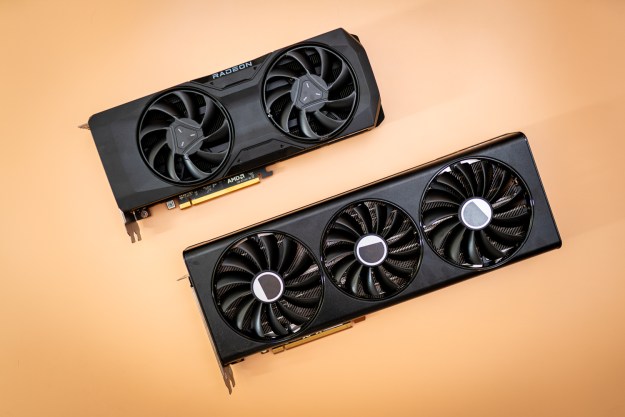At launch, AMD’s RDNA 2-powered RX 6000 cards performed slightly worse than Nvidia’s RTX 30-series range. The RX 6900 XT ran about 10% slower than the competing RTX 3090, and the RX 6800 XT ran about 6% slower than the competing RTX 3080. Through various optimizations, however, the tables have turned. According to some testing data, AMD’s cards now run up to 9% faster depending on the resolution and card.
An analysis from 3DCenter shows the performance gains AMD has achieved over the past several months. Using benchmarks from various outlets in December 2020, it found that the RTX 3080 performed about 3.5% better at Full HD and 1440p. Using data from June 2021, the performance gap has flipped in AMD’s favor, with the RX 6800 XT performing 5% better at Full HD and 3.1% better at 1440p.

Performance increases are only natural for graphics cards, as driver optimizations squeeze out extra performance, and updated benchmarking rigs contribute to more impressive results. As 3D Center points out, though, there are other factors at work for AMD. Both AMD and Nvidia saw performance gains between December 2020 and June 2021, but AMD saw more of an improvement.
Smart Access Memory (SAM) plays a big role. This feature allows Ryzen 5000 and select Ryzen 3000 processors to access all of the video memory on RX 6000 cards. Nvidia has a similar feature called Resizable Bar. Both features achieve the same goal, but benchmarks show an average 7% improvement with SAM and only a 1% improvement with Resizable Bar.
This difference alone shows the gap described by 3DCenter. Combined with driver optimizations and better test benches, the power of SAM is starting to show through. It’s not a massive improvement, but still enough for AMD to claim the performance crown at certain resolutions.
There are a couple of caveats to 3DCenter’s analysis, though. The first is that the benchmarks only account for rasterized performance, so the data doesn’t consider ray-tracing results. RX 6000 cards have performed worse than RTX 3000 cards in ray tracing benchmarks due to the fact that Nvidia offers DLSS (an upscaling technology that’s essential for ray tracing). AMD recently released a DLSS competitor in the form of FidelityFX Super Resolution, though it’s too soon to draw any firm
Resolution is also a point of contention. It’s true that AMD’s cards have seen a performance improvement across the board, but more so at Full HD and 1440p. At 4K, AMD’s cards have improved in the range of 3%, which is the same performance gain Nvidia cards have seen over the past few months.
Editors' Recommendations
- I’ve reviewed every AMD and Nvidia GPU this generation — here’s how the two companies stack up
- AMD just did Nvidia a serious favor
- AMD’s RX 7600 XT might be dead on arrival — but there’s a catch
- Here’s how AMD counters Nvidia’s big RTX Super launch
- Please, don’t buy an AMD GPU right now





